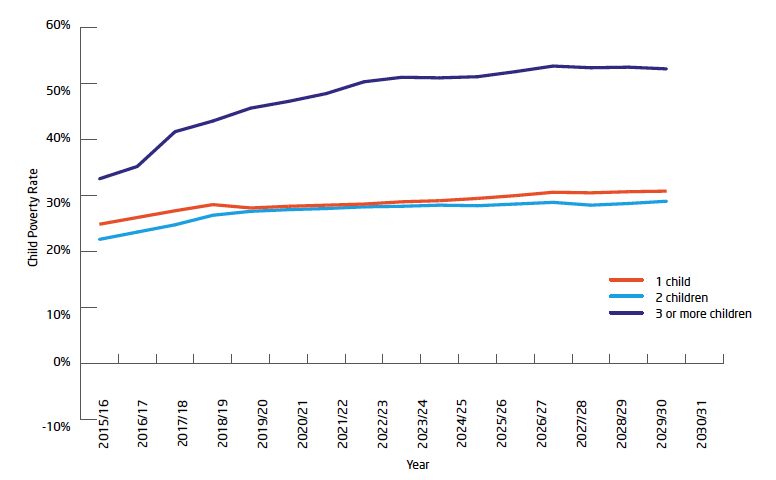Chief Medical Officer for Scotland’s Annual Report summary 2017-2018: annex
The Chief Medical Officer's A Summary of the Health of the Nation provides data on some of the key issues related to Scotland’s health.
Priority 5: A Scotland Where We Have A Sustainable, Inclusive Economy With Equality of Outcomes For All
Inequalities in income, wealth and power are the root causes of inequalities in health. Addressing these inequalities is important if the right to good health for all social groups is to be realised.
Child Poverty
Although many measures of poverty have improved in Scotland over the last 20 years, income inequality has remained fairly static and at an historically high level. We have selected the topic of child poverty as an example of the importance of income for health and because of its potential lifelong impact on young people in Scotland. Child poverty is projected to increase markedly into the future. Much of that increase is due to changes in the social security system that will erode the value of benefits into the future. We therefore need an economy which is genuinely sustainable, both ecologically and economically, which creates high quality, fulfilling work and which generates sufficient wealth for us to flourish.
Statistical modelling by the Institute for Fiscal Studies (IFS) suggests planned changes to taxes and social security will increase child poverty rates substantially until at least 2021. The increase in child poverty will occur in both relative terms (i.e. compared to contemporary median incomes) and absolute terms (the UK government measure of comparing to 60% of the 2010 median income level). The IFS has highlighted that there are significant uncertainties in the projected rates of economic and wage growth, but the projected impacts due to changes in taxes and benefits are based on policies that have already been announced. For child poverty, the introduction of the 'two child limit' would have been a major contributor to the projected increase[16] but this will not now be implemented as originally announced.
The Scottish Government commissioned projections of child poverty based on the announced policies of relevant administrations and on a number of assumptions around demographic trends.[17] It shows a large projected rise in the number of children in poverty in the future, especially in larger households (Figure 9).
Figure 9: Child poverty projection for Scotland by household size for period 2015/6 to 2030/1

Source: Scottish Government[17]
The ScotPHO Informing Interventions to reduce health Inequalities ('Triple I') project uses epidemiological modelling to estimate the potential impacts of various interventions on premature deaths, years of life lost, and hospitalisations, and on inequalities in these outcomes.[18] The modelling suggests that income-based policies that redistribute income disproportionately to those with the lowest incomes are likely to be effective in improving health and reducing health inequalities in Scotland.
Contact
Email: stephen.fenning@gov.scot
There is a problem
Thanks for your feedback